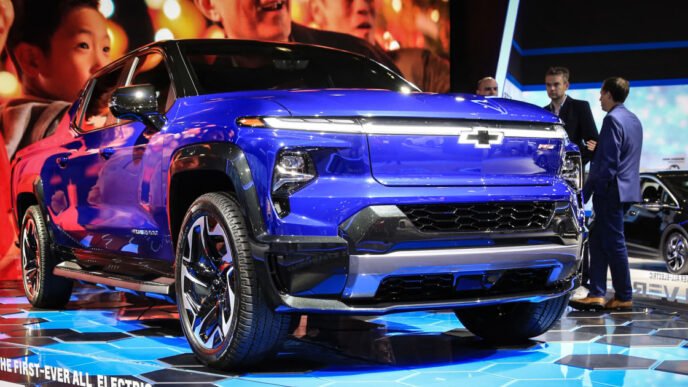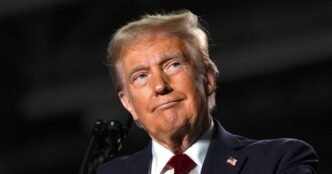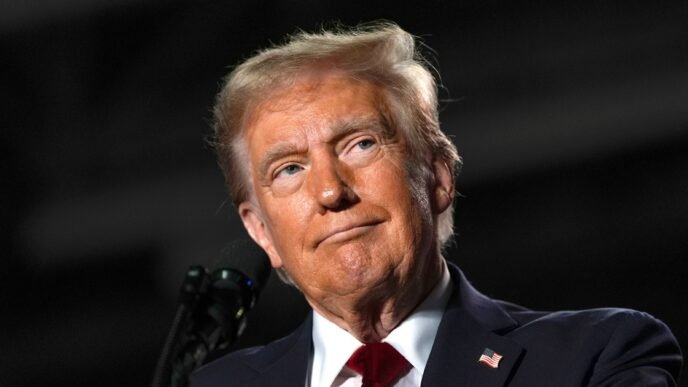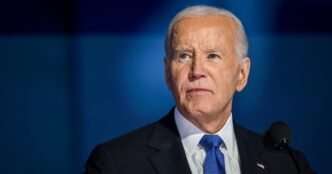The trade war is far from over, and Americans could still pay a big price, according to s and analysts.
Even after the U.S. and China agreed to halt levies on each other for 90 days, U.S. households’ net purchasing power is still set to shrink by an average $2,800 a year, the Yale Budget Lab estimated Monday.
The researchers’ current estimate is lower than the $4,900 hit they forecast based on the state of play on April 15, but it still reflects the sting of a nearly 18% average effective tariff rate — the highest in more than 90 years.
President Donald Trump has delayed, watered down or lowered many of his severest import taxes in recent weeks. He partially walked back a slate of global duties days after unveiling it last month, offered some reprieve on his 25% auto tariffs, and temporarily slashed duties on China to 30% after hiking them 145%. The administration unveiled the outlines of a trade pact with the United Kingdom last week and said it had held “productive” talks with Beijing officials over the weekend that are set to continue.
But analysts and executives say the turmoil generated by Trump’s fast-changing trade policies has already begun hitting supply chains and rewriting corporate strategies, including on pricing. Perhaps the only major prediction s continue to voice confidently is that consumers will see higher prices from tariffs.
Businesses are “sitting there making a very targeted choice, not probably based [solely] on their own economics but their economics and their competitors,” said Andy West, a senior partner at the consulting firm McKinsey who advises CEOs on corporate strategy and finance. “You’re going to have to react,” he said.
The CEO of Barbie maker Mattel said last week that higher prices are on the table but expanding domestic manufacturing isn’t.
“That’s OK, let him go, and we’ll put a 100% tariff on his toys, and he won’t sell one toy in the United States, and that’s their biggest market,” Trump responded in Oval Office remarks, during which he also defended his reprieve on British luxury car brand Rolls-Royce.
Big questions remain around how the global trade order will look a year from now, making it difficult to draw solid conclusions from recent data about the state of the economy or where it’s headed next.
“There’s been a pretty substantial misalignment between the soft data — which intends to capture sentiment or confidence, or lack thereof — and essentially the hard data, which measures the activity in the economy,” Mark Hamrick, senior economic analyst at Bankrate, told NBC News this month.
He noted that the latest employment data looked stronger than analysts had forecast, but many cautioned it was already a dated snapshot of the labor market. Even a better-than-expected inflation report Tuesday failed to jolt investors, with major stock indexes little changed despite a cooldown in consumer prices.
Seema Shah, chief strategist at Principal Asset Management, warned clients Tuesday of “prolonged inflation uncertainty,” saying in a note that “a clear read” on the direction prices are heading “won’t be visible for several months yet.” Analysts at Capital Economics all but waved away the April inflation numbers, saying that “it is likely to be a different story this month as tariff effects start to feed through” — echoing warnings that have greeted economic data releases for weeks.
For many industries, the trade war has already affected supply chains operating on monthslong lead times. Retailers are stocking up on holiday-season items now. Fireworks sellers recently told NBC News that tariff plans had scrambled their last wave of shipments for July Fourth. Global trade data shows manufacturing demand plunged amid U.S.-China trade tensions in recent weeks, with experts warning the recent tariff truce isn’t likely to cool anxieties that have already crashed into shipping volumes.













